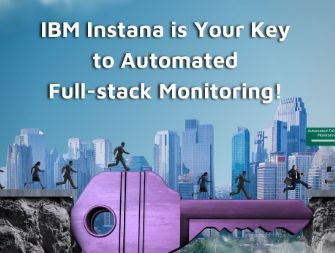August 2025 – Dallas, Texas
In 2025, businesses aren’t just tracking what they own—they’re tracking how it performs, when it will need maintenance, and how much value it’s delivering. That’s the mission of Enterprise Asset Management (EAM): the discipline (and technology) that ensures every physical asset—from factory machinery to delivery trucks—pulls its weight and pays its way.
Why EAM Is a Strategic Imperative
Assets are expensive to acquire and costly to maintain. When they fail unexpectedly, the financial and operational consequences can be severe. The Aberdeen Group estimates that unplanned downtime costs manufacturers $260,000 per hour on average (Aberdeen, 2024).
EAM solutions allow organizations to:
-
Extend asset lifespans.
-
Reduce downtime.
-
Optimize maintenance schedules.
-
Maintain compliance with safety and environmental regulations.
Core Capabilities
-
Asset Lifecycle Tracking: From purchase to retirement, with full maintenance history.
-
Preventive & Predictive Maintenance: Schedule work based on usage or sensor data to avoid costly breakdowns.
-
Work Order Management: Assign and track maintenance tasks efficiently.
-
Inventory & Spare Parts Management: Ensure the right parts are on hand when needed.
-
IoT Integration: Monitor real-time performance data directly from connected equipment.
Business Impact
-
Manufacturing: Predictive analytics reduce downtime by identifying issues before failure.
-
Utilities: EAM helps extend the life of critical infrastructure like power lines and water treatment systems.
-
Transportation: Fleet operators optimize routes and maintenance schedules for maximum uptime.
IBM’s Maximo, one of the most widely used EAM platforms, reports that clients typically achieve 10–20% reductions in maintenance costs and up to 50% fewer breakdowns after implementation (IBM, 2025).
Evolving from Reactive to Proactive
Traditional maintenance models were reactive—wait for a breakdown, then fix it. EAM, especially when combined with IoT and AI, shifts this to a predictive model. Sensors detect early warning signs like unusual vibration or temperature spikes, and the system schedules a repair before the problem escalates.
This not only reduces repair costs but also minimizes the risk of catastrophic failure.
Challenges in Adoption
-
Data Quality: Inaccurate or incomplete asset records undermine EAM effectiveness.
-
Integration: EAM needs to work with ERP, IoT platforms, and supply chain systems.
-
Change Management: Maintenance teams must adapt to new workflows and digital tools.
The Future of EAM
By 2030, EAM systems will likely be fully AI-driven, making maintenance recommendations based on global asset performance benchmarks. Integration with digital twins will allow teams to simulate changes before implementing them, reducing risk.
EAM will also play a larger role in sustainability, helping organizations track energy consumption, extend asset lifespans, and reduce waste.
Closing Thought
In a world where operational efficiency is everything, EAM turns asset management into a competitive advantage. It’s not just about keeping the lights on—it’s about ensuring every asset shines.
References
-
Aberdeen Group. (2024). The Cost of Downtime in Manufacturing. Retrieved from https://www.aberdeen.com
-
IBM. (2025). Maximo Application Suite Overview. Retrieved from https://www.ibm.com
-
Gartner. (2025). Magic Quadrant for Enterprise Asset Management Software. Retrieved from https://www.gartner.com
Samantha Cohen – Co-Editor
Dallas, Texas
Peter Jonathan Wilcheck – Co-Editor
Miami, Florida
Jean Francois Gauthier – InfoSec News Contributor
Montreal, Quebec
Post Disclaimer
The information provided in our posts or blogs are for educational and informative purposes only. We do not guarantee the accuracy, completeness or suitability of the information. We do not provide financial or investment advice. Readers should always seek professional advice before making any financial or investment decisions based on the information provided in our content. We will not be held responsible for any losses, damages or consequences that may arise from relying on the information provided in our content.



